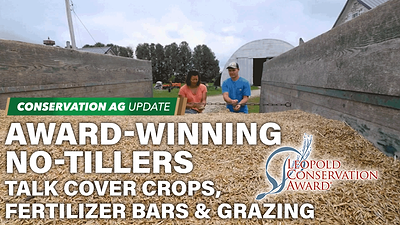Strip-till and other conservation practices not only preserve soil and water, but also can save growers money, says Tony Vyn, Purdue University Extension agronomist.
Sub-surface nutrient banding and other techniques can keep soils productive, protect nutrients from runoff, lessen the amount of fuel farmers use and reduce labor costs.
“Farmers should always keep conservation practices in mind because it’s important to the stewardship of the soils they farm and because it’s important to their economics, whether it’s capital costs, operating costs or the overall labor investment they put into each acre,” Vyn says.
Strip-Tilling Corn-On-Corn
“Time and time again we continue to show very good results from no-till and strip-till when corn follows soybeans or wheat in rotation,” Vyn says. “We’ve only been stymied a bit in no-till success for corn following corn on finely textured and poorly drained soils. Aside from that, it’s been surprising how well no-till and strip-till systems have done, even in progressively higher residue-producing fields associated with increased crop yields and planting corn at higher plant densities.”
Strip-till offers the potential for deep nutrient banding and provides warmer, dryer berms to plant into.
Vertical tillage is another option. In this, farmers redistribute surface residue and only shallowly penetrate soils. It helps the near-surface soil dry faster and can allow earlier planting.
Reducing Runoff
When it comes to conserving nutrients, tillage systems matter. Broadcast or surface-applied nutrients have a higher likelihood of runoff, especially during a big rain.
Vyn said this could especially be a problem with broadcast-applied phosphorus.
“Long-term, systems that conserve nutrients as a whole would be enhanced even more if we began to think through our farming practices to try and deliver more sub-surface banded application, particularly of phosphorus and certainly nitrogen as well,” he says.
Applying nutrients sub-surface and adopting no-till also has shown promise in reducing greenhouse gas emissions.
Vyn says the keys to farmers adopting these conservation practices are more integrated tillage-nutrient systems research, whether in on-farm strip-trials, or in greater detail at university research farms, and using modern technologies.
These include tillage and nutrient application equipment, precision automatic guidance and stress-tolerant crop varieties, all the while continuing efforts to make the education and tools more readily available.
“If our goals are conservation, reduced costs, carbon sequestration and less greenhouse gas emissions, we need to look at ways to optimize conservation practices to remove the obstacles,” Vyn says. “We need these practices to be rational and we need farmers not to have valid excuses not to adopt them.”





